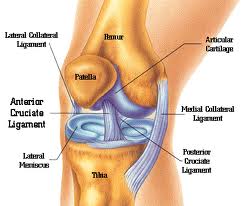Knee Pain
Knee is the the joint between the
thigh and the lower leg. Knee pain is painful inflammation and
stiffness of the joints. If your knees
are giving you problems, and you feel like the Tin Man from "The
Wizard of Oz" when getting out of bed, you're not alone.Knee
pain is one of the most common complaint because of this people
face lot of problems. In the modern world number of knee problems is
increasing. Knee pain has a wide variety of causes and
treatments.Without knee a man cant do heir regular work properly.Knee
plays very important role in the body.
Structure of the knee
The knee is a joint that is made up of three parts. This joint has
an inner (medial) and an outer (lateral) compartment. The kneecap
(patella) joins the femur to form a third compartment called the
patello femoral joint. The thighbone (femur) meets the large
shinbone (tibia), forming the main knee joint.
The knee joint is covered with a joint capsule with ligaments
strapping the inner and outer of the joint (collateral ligaments) as
well as crossing within the joint (cruciate ligaments). These
ligaments helps the knee to give stability and strength.
The meniscus is a thickened cartilage pad between the two joints formed by the femur and tibia. The meniscus acts as a smooth surface for motion and absorbs the load of the body above the knee when standing. The knee joint is covered by fluid-filled sacs called bursae, which act as gliding surfaces that reduce friction of the tendons. Below the kneecap, there is a large tendon called(patellar tendon) which attaches to the front of the tibia bone. Large blood vessels passing through the area behind the knee is called the popliteal space. The large muscles of the thigh move the knee. In the front of the thigh, the quadriceps muscles extend the knee joint. In the back of the thigh, the hamstring muscles flex the knee. The knee also rotates slightly under guidance of specific muscles of the thigh
Functions of the knee
The knee functions to allow movement of the leg and is critical to
normal . Walking.The knee flexes normally to a maximum of 135 degrees
and extends to 0 degrees. The bursae, or fluid-filled sacs, serve as
gliding surfaces for the tendons to reduce the force of friction as
these tendons move. The knee is a weight-bearing joint. Each meniscus
serves to evenly load the surface during weight-bearing and also aids
in disbursing joint fluid for joint lubrication.
The main function of the knee is to bend and straighten for
moving the body. It also twists and rotates. Bones, ligaments,
tendons, and cartilage.are the structures to help the knee to perform
all the acions .
- The knee joint involves three bones.
- The thighbone or femur comprises the top portion of the
joint.
- One of the bones in the lower leg (calf area), the tibia, provides the bottom portion of the joint.
- The remaining bone in the calf, the fibula is not directly
involved in the knee joint.
Bones
Ligaments
- Ligaments are fibrous bands that connect bones to each
other.
- The knee includes four important ligaments, all four of which connect the femur to the tibia:
- The anterior cruciate ligament (ACL) and
posterior cruciate ligament (PCL) provide front and back (anterior
and posterior) and rotational stability to the knee.
Tendens
- Instead of connecting bones to other bones as ligaments do, tendons connect muscles to bones.
- The two important tendons in the knee are (1) the quadriceps
tendon connecting the quadriceps muscle, which lies on the front of
the thigh, to the patella and (2) the patellar tendon connecting
the patella to the tibia (technically this is a ligament because it
connects two bones).
- The quadriceps and patellar tendons as well as the patella
sometimes called the extensor mechanism, and together with the
quadriceps muscle they facilitate leg extension (straightening)
Cartilage - Cartilaginous structures callled (one is a meniscus) line
the top of the tibia and lie between the tibia and the two(
knuckles )at the bottom of the femur (the femoral condyles).
- Meniscus provide both space and cushion for the knee joint.
Bursae
- Bursae (singular is bursa) are fluid-filled sacs that help to cushion the knee. The knee contains three important groups of bursae.
- The prepatellar bursa
- The anserine bursa
- The infrapatellar bursa


No comments:
Post a Comment